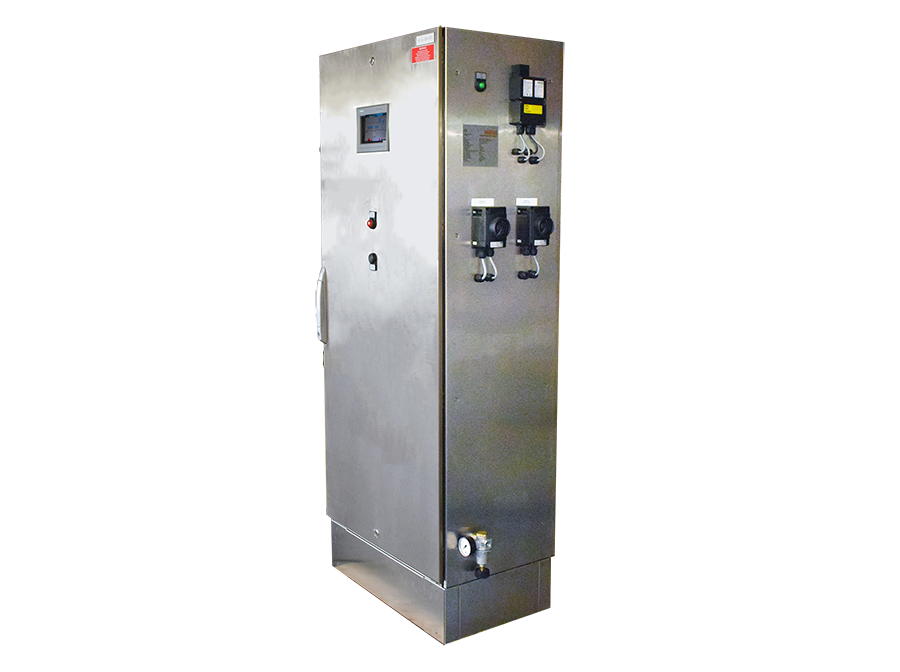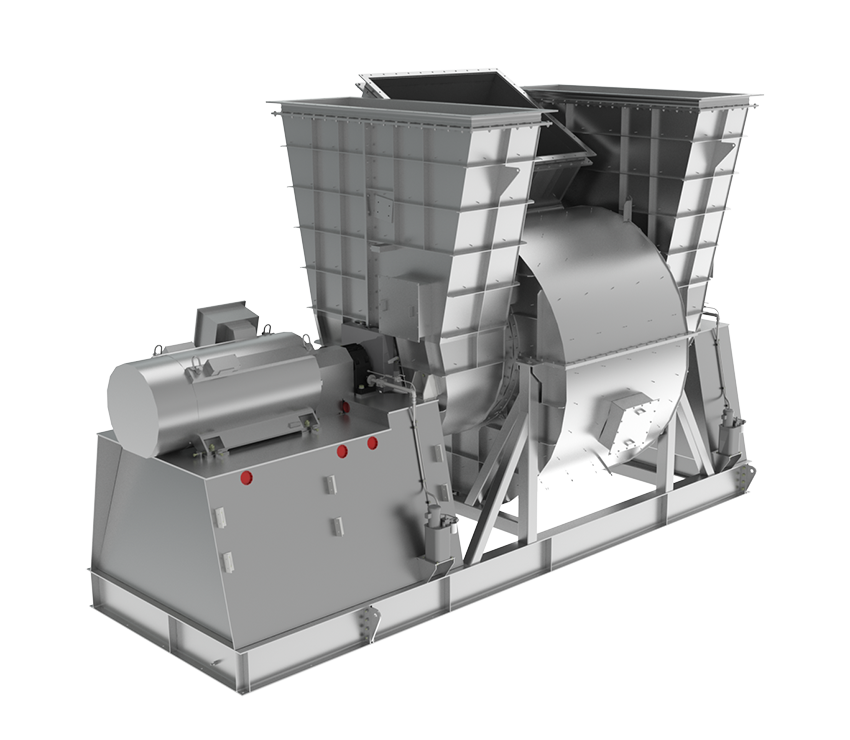For process systems that require constant pressure in the loop or in a header, pressurizing the system will require continuous monitoring. When a fan or blower is integrated into this loop, a build-up of pressure or a turndown of the blower can result in operating cases close to the top of the blower performance curve.
At a certain moment, the fan will not be able to deliver the required flow and pressure in which case the fan will surge and the airflow direction will reverse.
The system pressure will decrease until the fan recovers and the process will start all over again. This phenomenon is called surging.
How does the fan anti-surge control work?
Airflow, pressure and temperature are measured, these conditions are converted to standard conditions and compared to the surge characteristics of the fan by an advanced algorithm.
When the flow through the fan starts to reduce and reaches a critical surge point, the Anti Surge Controller will open a recycle or blow-off valve to ensure the minimum required flow. The fan is now protected and the process is not interrupted.
The PLC control algorithm not only calculates the mentioned flow, pressures and temperatures but also takes the molecular weight and polytrophic exponent of the gas into account. The fan characteristics are also entered. All measured and calculated data is presented on the colour display.
Suitable fans
The ASC is suitable for backward curved centrifugal fans or blowers with 1, 2 or 3 compression stages.
Standalone operation
The ASC panel works as a standalone unit. Connection to a DCS is not required.
The anti-surge control system comprises a bypass valve that will open if the operating point shifts too close to the top of the fan curve. Opening the bypass valve has several effects:
- It increases the total flow through the fan and reduces the fan pressure so that the operating point shifts away from the top of the fan curve
- The lower fan pressure makes the flow through the system drop a little
- For closed-loop systems, the gas going through the valve will not be vented into the atmosphere but will instead be recirculated to the inlet of the blower. Some active cooling will be necessary to prevent overheating. A maximum allowable gas temperature should be set and guarded by means of a temperature transmitter
The purpose of the anti-surge control is to guarantee a stable and reliable operation. The ASC will be programmed for the specific blower. The system is backed up by bearing vibration measurements.
Surging symptoms
- Surging interrupts your process e.g. drying, heating, cooling, or transporting
- Surging will cause a dramatic increase in noise and vibration. This will, in time, result in structural fatigue and damage to your fan
- The life of the bearing, main shaft, hub, impeller, coupling and motor will be dramatically reduced, and your fan process will be interrupted
- Suitable for ATEX zone 2
- Glass connection to the Distributed control system
- Remote controlling
- Flow transmitters
- Vibration transmitters
- Pressure transmitters
- Temperature transmitters
- Control valves
- Condition monitoring of bearings
Surging symptoms
- Surging interrupts your process e.g. drying, heating, cooling, or transporting
- Surging will cause a dramatic increase in noise and vibration. This will, in time, result in structural fatigue and damage to your fan
- The life of the bearing, main shaft, hub, impeller, coupling and motor will be dramatically reduced, and your fan process will be interrupted

The graph presents the blower curve and the parameter R as a function of the volume flow at the blower inlet. The surge limit SLV1 has been indicated in the graph, as well as two other programmable limits, named SLV2 and SLV3.






